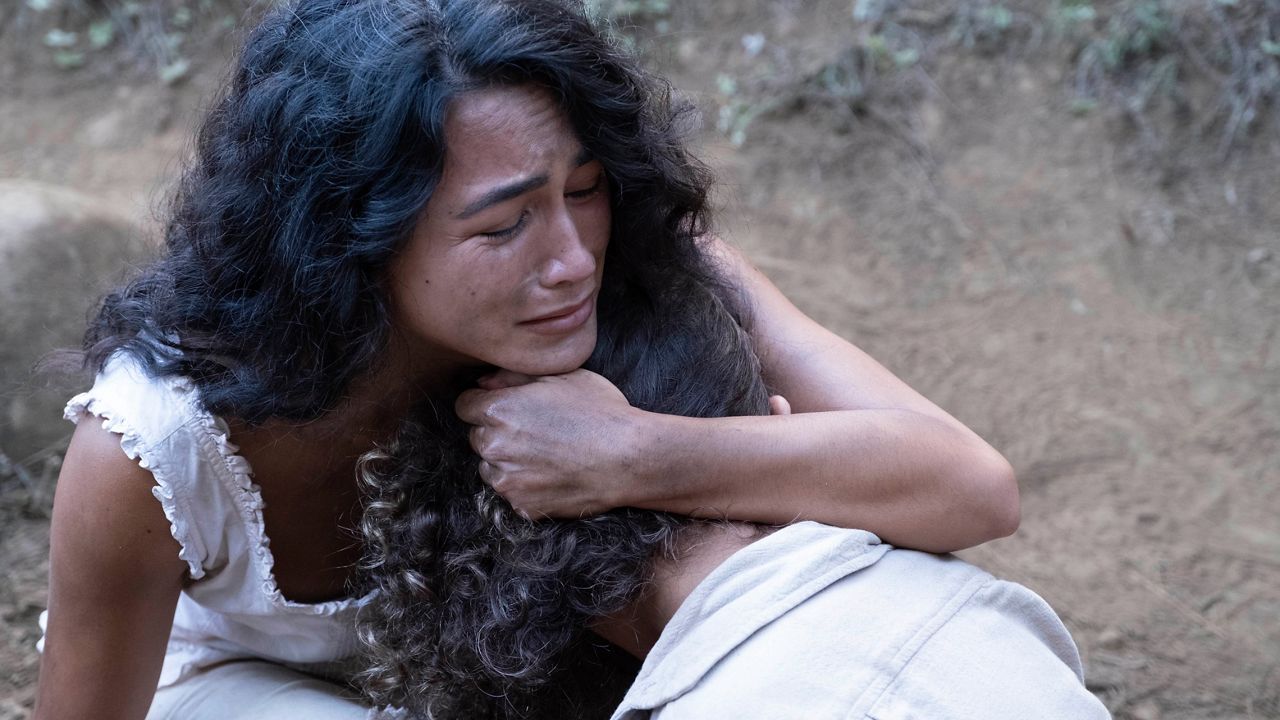“The Wind and the Reckoning” is a new movie filmed in Hawaii, with a crew that was made up exclusively of Hawaii residents, and the script is primarily in Hawaiian.
The Hawaii International Film Festival is screening the film on Nov. 3 at the Bishop Museum’s Great Lawn.
Set in 1893, after the overthrow of Queen Liliuokalani, the movie follows a Hawaiian paniolo named Ko’olau (Jason Scott Lee) and his son named Kaleimanu (Kahiau Perreira) who have contracted leprosy, but they refuse to surrender when authorities come to exile them to Kalaupapa on Molokai. After killing the sheriff, the family of three flees to Kalalau Valley on Kauai, where they join other Hawaiians who have been infected with leprosy. They are pursued by a group of mercenaries, and eventually Ko’olau and his wife, Pi’ilani (Lindsay Marie Anuhea Watson), and the other fugitives battle them.
Pi’ilani’s firsthand account of their ordeal, published in Hawaiian in 1906, inspired the movie. “The True Story of Kaluaikoolau as Told by His Wife, Pi’ilani” was translated into English in 2001.
This is one of the first movies with an international distribution that will be primarily in ‘Ōlelo Hawai’i, the Native Hawaiian language. Director David L. Cunningham, who grew up on Hawaii Island, said this was one of the biggest challenges of the film.
“Early on, I decided that anytime a Native Hawaiian spoke to another Native Hawaiian on screen that we should do it in ‘Ōlelo Hawai’i,” said Cunningham.
For cultural and linguistic accuracy, four Hawaiian cultural experts were called upon: Leinā‘ala Fruean, Kumu Ka’ea Lyons, Kumu Kauhane Heloca and Kumu Na’auao Viva.
The cultural experts helped translate the script by John Fusco into ‘Ōlelo Hawai’i. They worked with the cast to teach them the language, and they were on set giving notes while filming.
“The kumu team were there with headphones listening to every word, and if there was an error or problem, we’d have to do another take,” said Cunningham.
The actors had less than three weeks to learn their lines, and none spoke fluent ‘Ōlelo Hawai’i, except for 12-year-old Perreira. He attended a Hawaiian immersion school, Ke Kula’ O’ Ehunuikaimalino, on Hawaii Island where most of the curriculum is taught in ‘Ōlelo Hawai’i.
The cultural experts also ensured the costumes were accurate, using historical photographers for inspiration.
“I really hope that this film can demonstrate that no matter what your ethnicity, your background, if you’re living here, there needs to be a recognition and appreciation and celebration of the host culture,” said Cunningham.
The movie was filmed with a Hawaii crew in Oct. and Nov. 2020, after the COVID-19 pandemic had shut down much of the world, in an isolated bubble on a 50-acre ranch on Hawaii Island. A cameraman on Kauai filmed the scenic coastline and mountain peaks, which were digitally merged with the footage from Hawaii Island to create the setting.
Cunningham said that the reception to the film has been very positive.
“We’ve been doing this festival circuit. And [at]every screening, every single one, we get people, usually of indigenous descent, [who get] quite emotional, because we chose to go with this language. And if they’re Native Hawaiian it’s usually significant,” said Cunningham.
After the Indianapolis International Film Festival screened the film, a group of Hawaiians who live there sang an impromptu mahalo chant.
While audiences have been celebrating the movie, Cunningham said that 40 distributors turned them down because the film is in ‘Ōlelo Hawai’i.
“They didn’t feel like there was a wide enough audience for this film, and that was too big of a hurdle to take on, which was really kind of a gut punch for us,” said Cunningham.
A streaming service like Netflix acquires many foreign language films, but Cunningham noted that the Korean language has 75 million speakers, while ‘Ōlelo Hawai’i has less than 20,000 speakers. From a business perspective, this gives a Korean language film a large audience because not everyone wants to read subtitles or watch a dubbed movie.
“That’s why we decided to do the festival circuit just to prove them wrong,” said Cunningham.
He is optimistic that the film will eventually get picked up by a large Hollywood platform because of the favorable reaction to the film.
“We’re out to prove that there are compelling Hawaii stories that the world will engage with. And we’re out to prove that there are storytellers both in front of the camera and behind the camera in Hawaii,” said Cunningham.
He said that the movie is proving that Hawaii stories made with a Hawaii cast are commercially viable and that people will buy tickets to go see these types of films.
“The Wind and Reckoning” will be screened on Nov. 3 at the Bishop Museum’s Great Lawn on Oahu, on Nov. 4, 5, and 6 at Ward Consolidated theaters on Oahu, on Nov. 17 at the Waimea Theater on Kauai, on Nov. 18 at the Kaahumanu Consolidated theater in Maui, and the following week at the Palace Theater in Hilo and Makalapua Regal in Kona.
Tickets for the Bishop Museum and Waimea Theater screenings can be purchased here, and Ward Consolidated screenings can be purchased here. For information about other screenings, visit “The Wind and the Reckoning” website.
The movie is headed to the North Dakota Human Rights Film and Arts Festival in Fargo for a screening on Nov. 2 and to the Garifuna International Indigenous Film Festival in West Hollywood for a screening on Nov. 12.
Michelle Broder Van Dyke covers the Hawaiian Islands for Spectrum News Hawaii.



